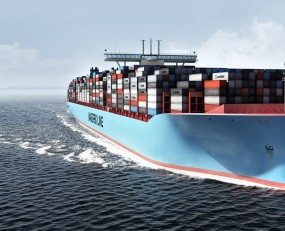
Maersk has been outlining its strategic vision for the newly restructured company at a ‘Capital Markets Day’ on Tuesday (13 December 2016). The plan gives the impression of being a mix of ambition and caution. It includes some remarkable proposals but delivering on such plans might be tricky.
The new Maersk aspires to be more integrated. More Maersk Line traffic will be routed through APMT terminal’s whilst Maersk will look to increase its landside transport management business. It will also utilise its transhipment facilities to create a capability that Soren Skou, Maersk’s CEO, compared to FedEx’s or UPS’ ‘hub and spoke’ systems. Yet the greatest opportunity, he said, was the ability to cross-sell, something which appears to lay particular emphasis on the freight forwarder Damco.
However, the company will still focus on the traditional business of container shipping with emphasis on cost and price competitiveness. Interestingly, Skou said that Maersk would create a “dual branded platform” in Latin America in order to exploit the regional position of the soon to be acquired Hamburg Sud. This replicates its arrangement with Safmarine in Africa.
Elsewhere during the presentation there appeared to be heavy emphasis on growth through acquisition, in both the shipping sector and in container terminals. Despite this, investment in shipping and ports will be reduced as the company feels that it, like the sector generally, has more than enough capacity to deal with growth in the medium-term. Therefore the strategy is composed of two key elements, with a desire to sweat assets more intensively whilst gaining market share through buying companies.
Essentially, Maersk is wrestling with the problem of a weak market for its core logistics assets. It is trying to work out how to gain more value from the assets it owns by grabbing more added value from the business that passes through those assets, as well as by marketing new services to its existing customers. This is at the same time as retaining its cost-leadership position in container shipping. Combining these various approaches may be complex and occasionally contradictory.
Source: Transport Intelligence, December 15, 2016
Author: Thomas Cullen